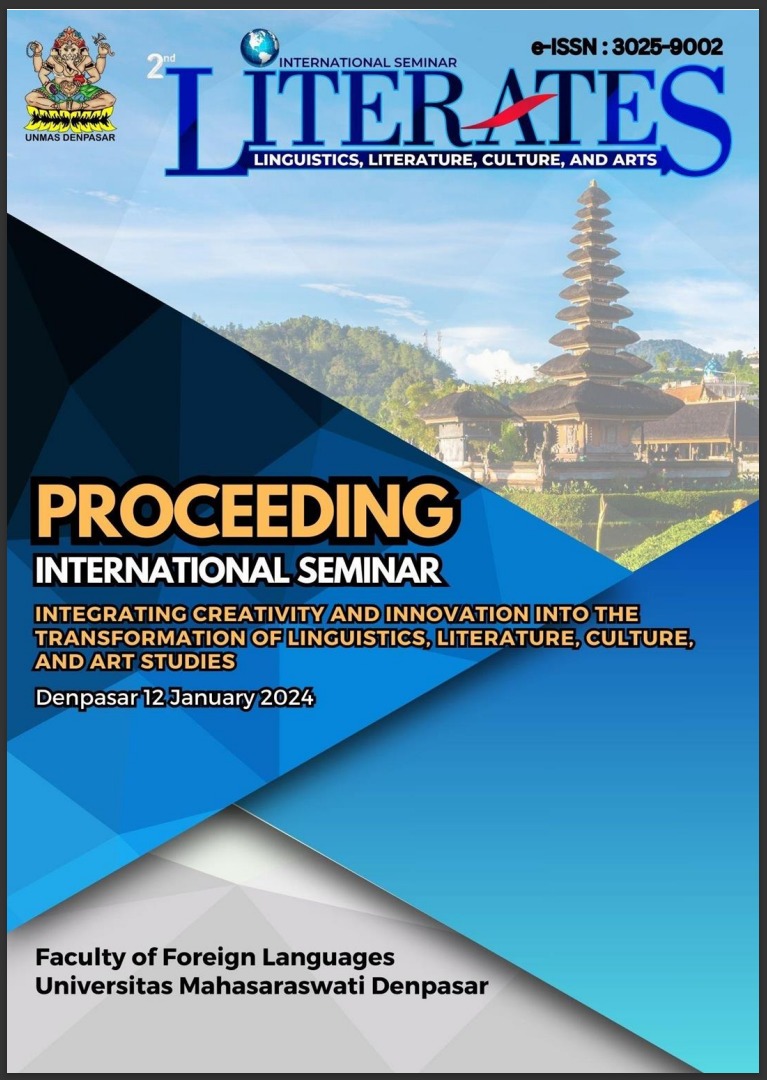COGNITIVE DOMAIN LEVELS IN ENGLISH FOR TOUR GUIDE TEXTBOOK USED IN INDONESIAN TOURISM VOCATIONAL SCHOOLS
Keywords:
Cognitive Domain, Revised Bloom Taxonomy, HOTSAbstract
This study aims to identify cognitive domain categories found in the textbook used for teaching English for tour guides in tourism vocational schools in Bali, Indonesia. The identification was based on the revised version of Bloom's taxonomy, which suggests six levels of cognitive dimension. The book entitled “English for Professional Tour Guiding Services”, was published by PT Gramedia Pustaka Utama. The research employed a mixed-methods approach, combining both qualitative and quantitative data analysis techniques, including content analysis and descriptive quantitative methods. The data were organized in the data analysis table, and the activities were classified based on cognitive dimension levels. The result revealed that the textbook contained 180 activities. The task included 53 (29,4%) remembering, 29 (16%) understanding, 47 (26,1%) applying, 19 (10,5%) analyzing, 16 (9%) evaluating, and 16 (9%) producing. In addition, 129 activities were identified as higher order thinking (HOTS) and 51 activities were considered as lower order thinking (LOTS). The main exercise was remembering and applying which highest cognitive level of the Revised Bloom's Taxonomy. Also, each chapter has a distinct amount of HOTS and LOTS exercises as well. These findings could be treated as an important reference for the decision of material selection in teaching English for Tour Guides in tourism vocational schools.






